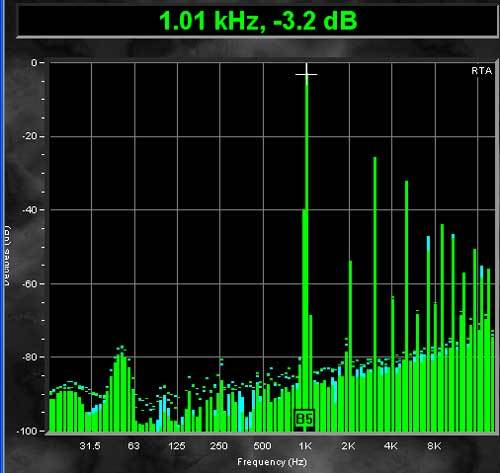Intel's HD Audio PC Sound Ambitions
Test Configuration And Audio Measurement
| Hardware | |
|---|---|
| Processor | Pentium EE, 3.4 GHz |
| Memory | 1 GB DDR2 |
| Graphics card | NVIDIA GeForce 6800 GT |
| Hard disk | 250 GB SATA, 7200 rpm |
| Optical drive | DVD BenQ 16/48X |
| OS | Windows XP Pro + SP1 |
| Direct X version | 9.0b |
| Sound system | |
| Speakers | Creative GigaWorks S750, Logitech Z2200 |
| Benchmarks | |
| Right Audio Mark Analyser 5. | |
| Right Mark 3DSound 1.0, DAAS audio measurement system, Neutrick 3337 audio measurement system |
Testing out new audio technology is usually full of surprises. And in this respect, Intel's HD Audio did not disappoint. After absolutely refusing to accept any input signal, a final update of the driver finally enabled us to receive our test signals. Even so, we were forced to note immediately that functioning was erratic. The line input was much too sensitive and it was impossible to get a digital 0 dB level without producing massive distortion.
As soon as -3 dB was approached, the distortion became really serious.
Obviously, there's still work to do on the drivers. And that's not all. So this initial attempt should be accepted for what it is and we'll have to wait for the commercial versions before we get a better idea of the true audio performance capabilities. It would be thus unwise to draw conclusions at this early stage.
We nevertheless ran the system through the mill of our usual test software, without being very certain of the validity of the results. They seemed to be quite reasonable, however, and would put it on an average level. That is not such a big surprise in view of the fact that the test is performed in recording/playback mode (input/output loop) in which the codec used only offers 20-bit AD 20 converters. Realtek only claims a minimum signal/noise ratio of 85 dB, an order of magnitude that we discovered for ourselves. That is reasonable and adequate for most of the public but rather modest in relation to what the best sound cards currently on the market are capable of.
We shall limit our presentation to the results obtained at 16 bits/44.1 kHz. Tests using higher settings (24 bits, 48 and 96 kHz) did not show any improvement.
Get Tom's Hardware's best news and in-depth reviews, straight to your inbox.
Current page: Test Configuration And Audio Measurement
Prev Page Is Dolby Digital To Your Liking? Next Page Behavior At 44.1 KHz